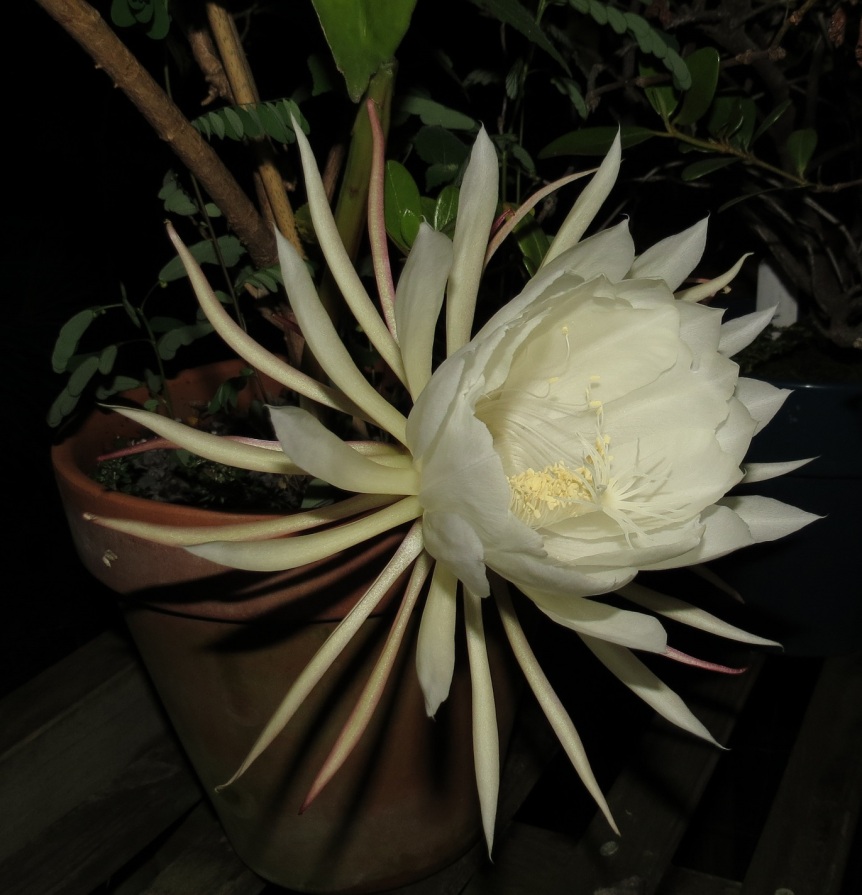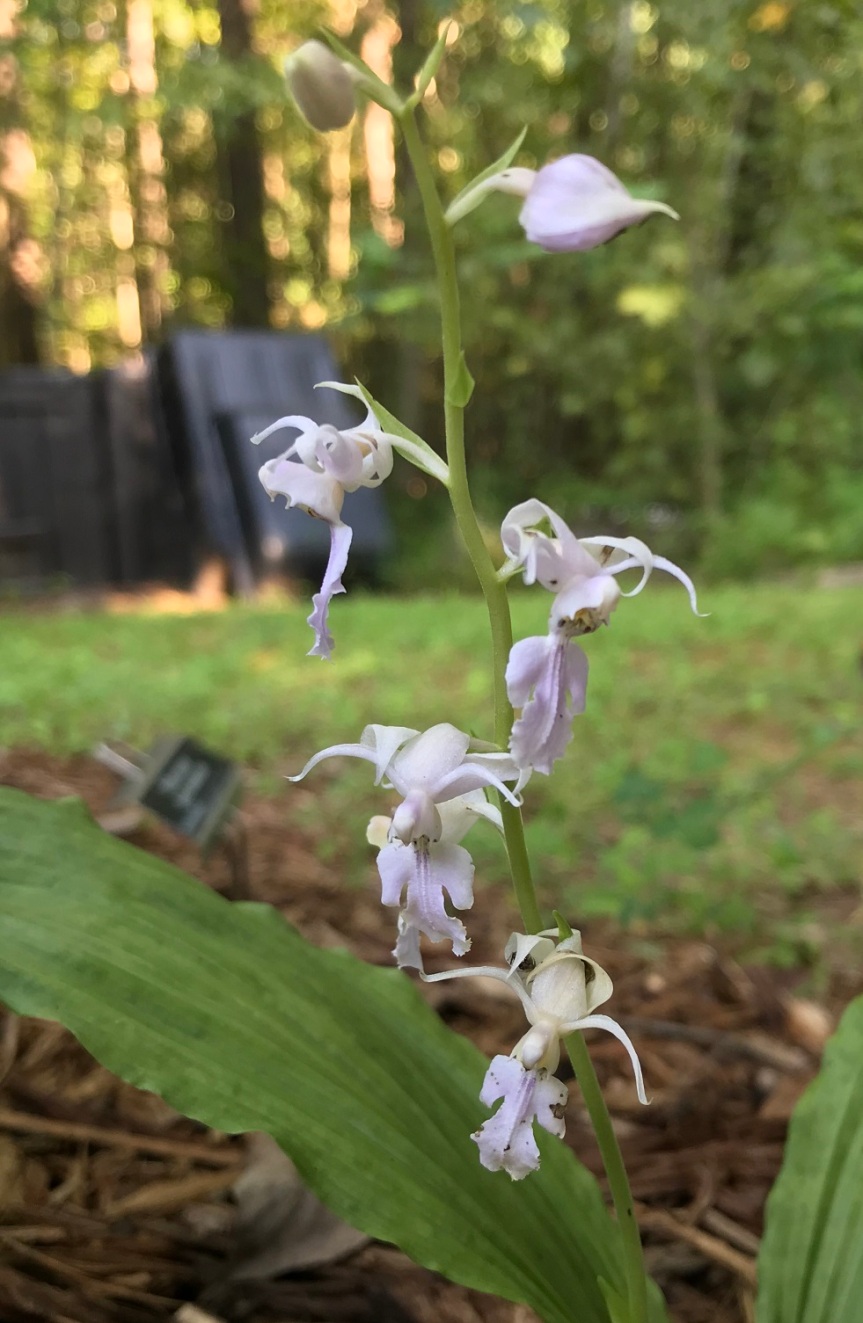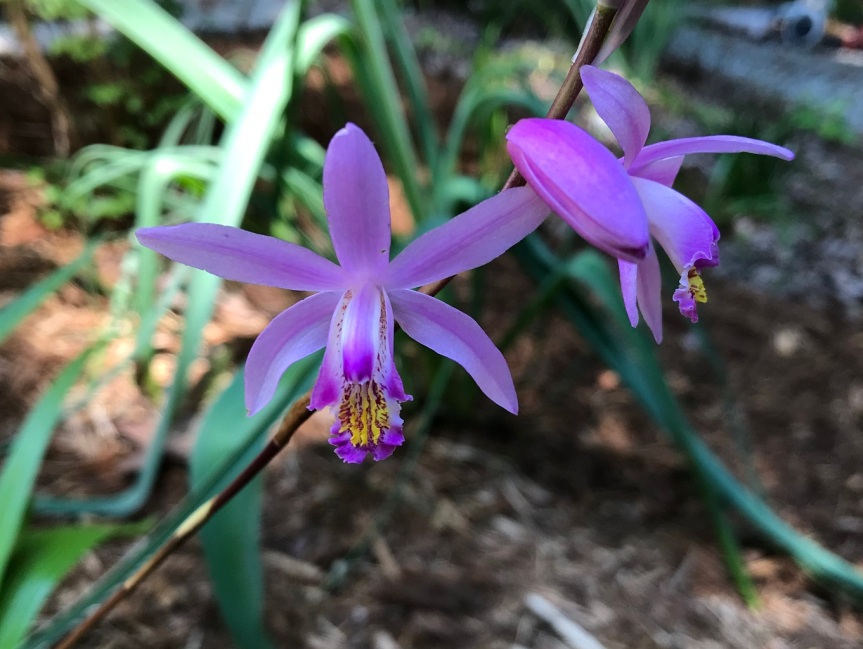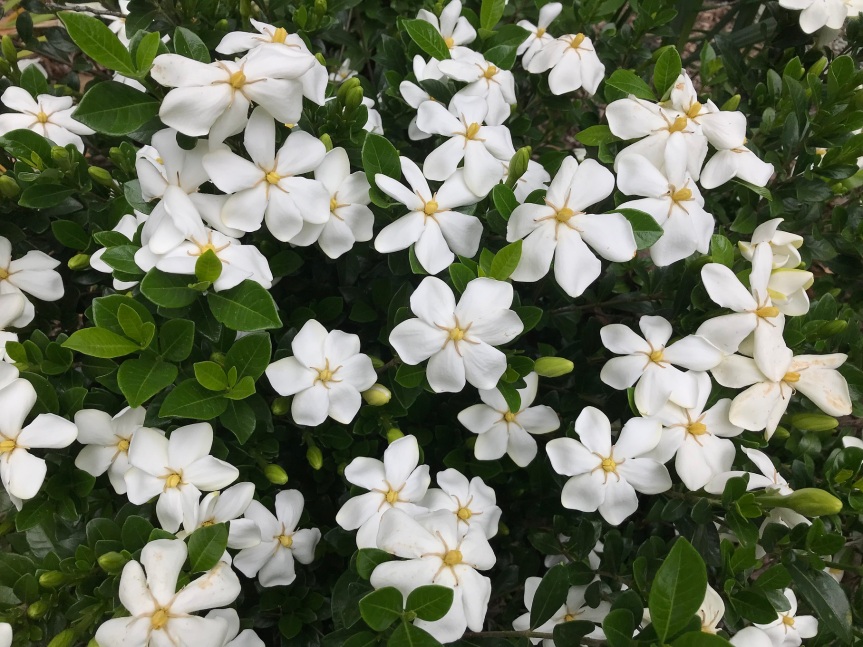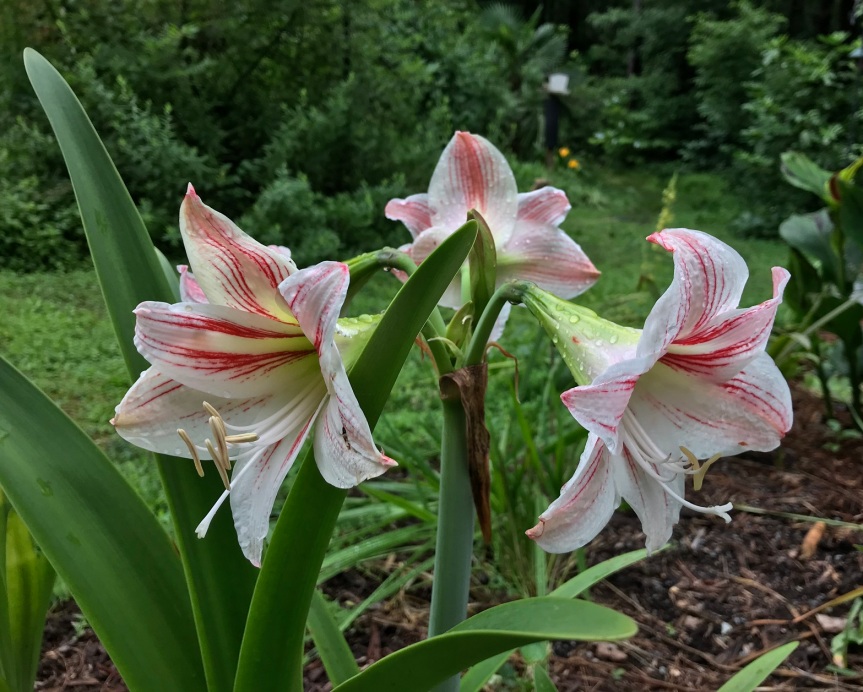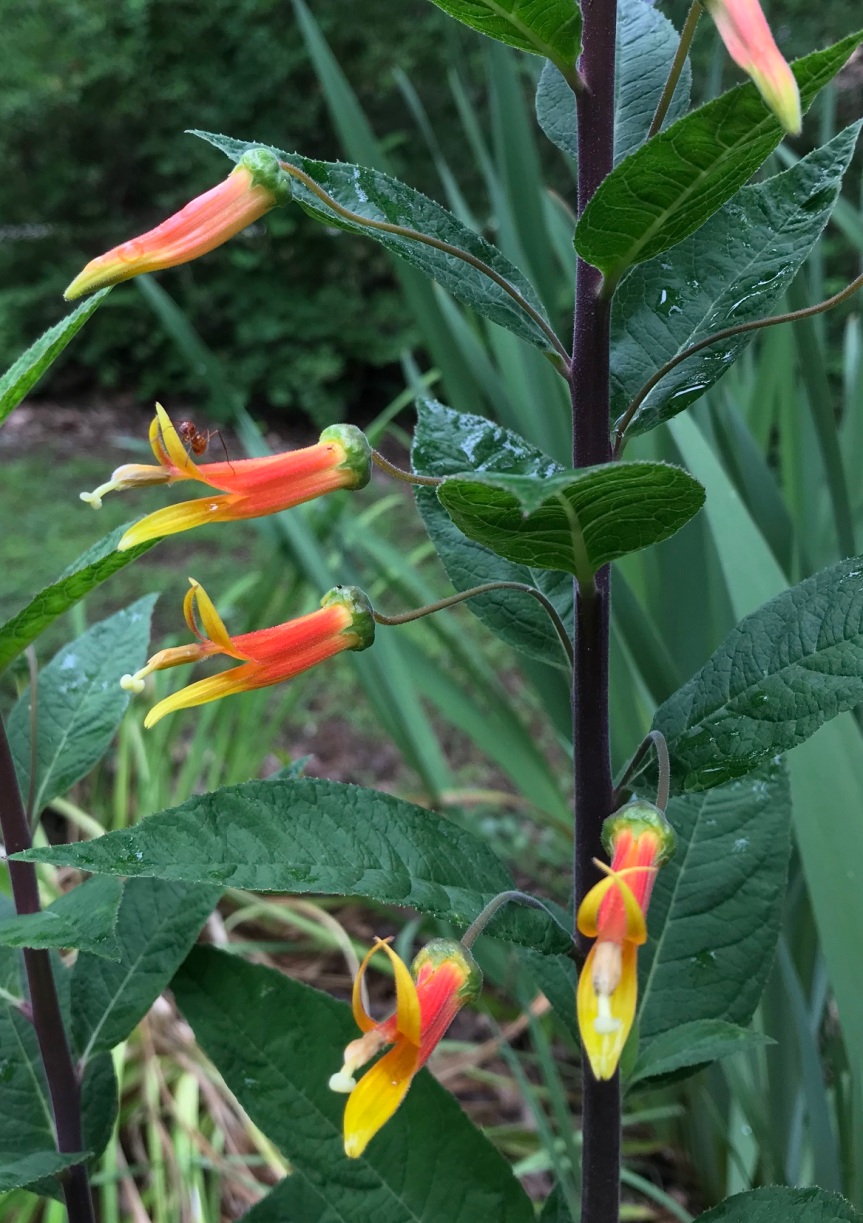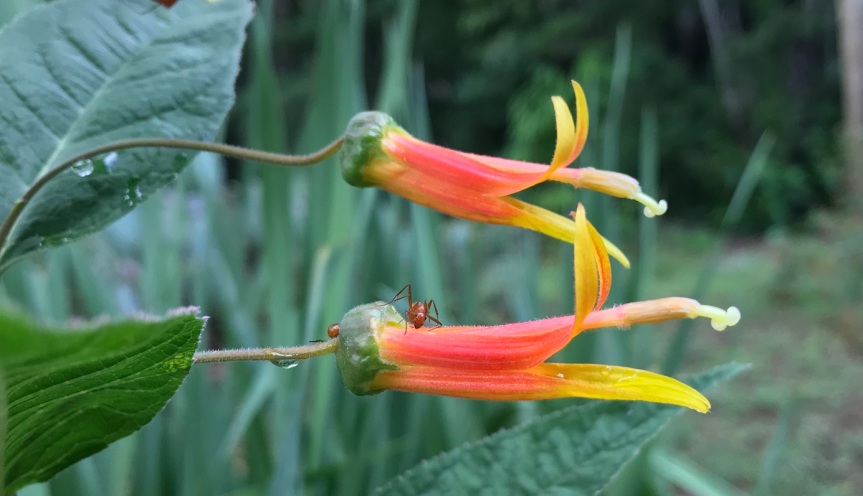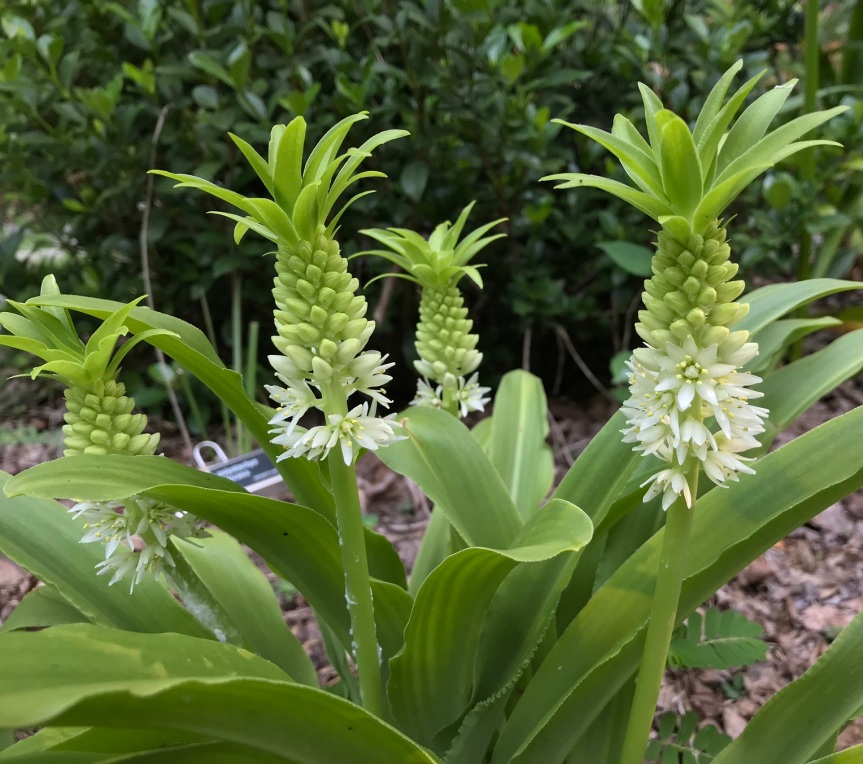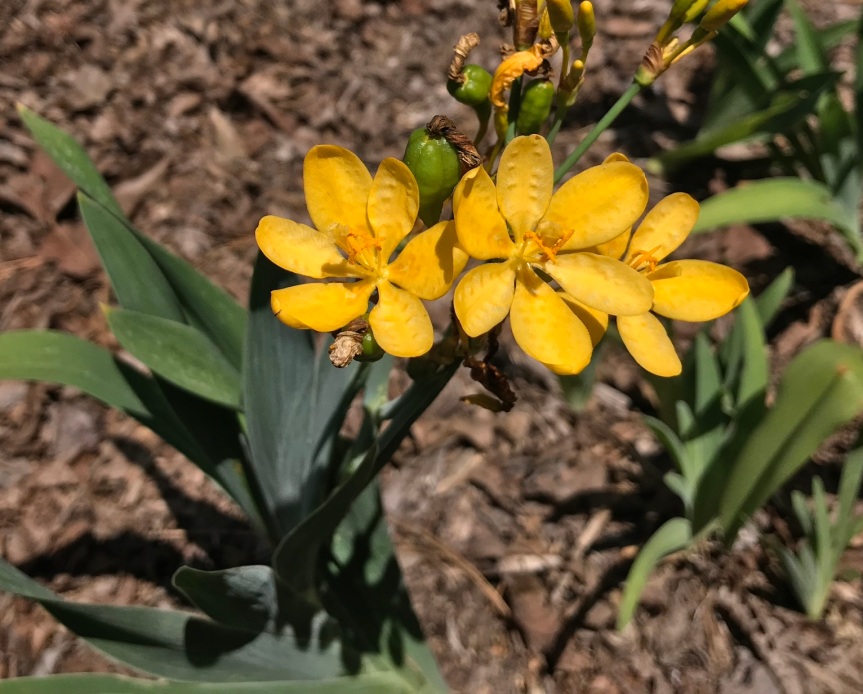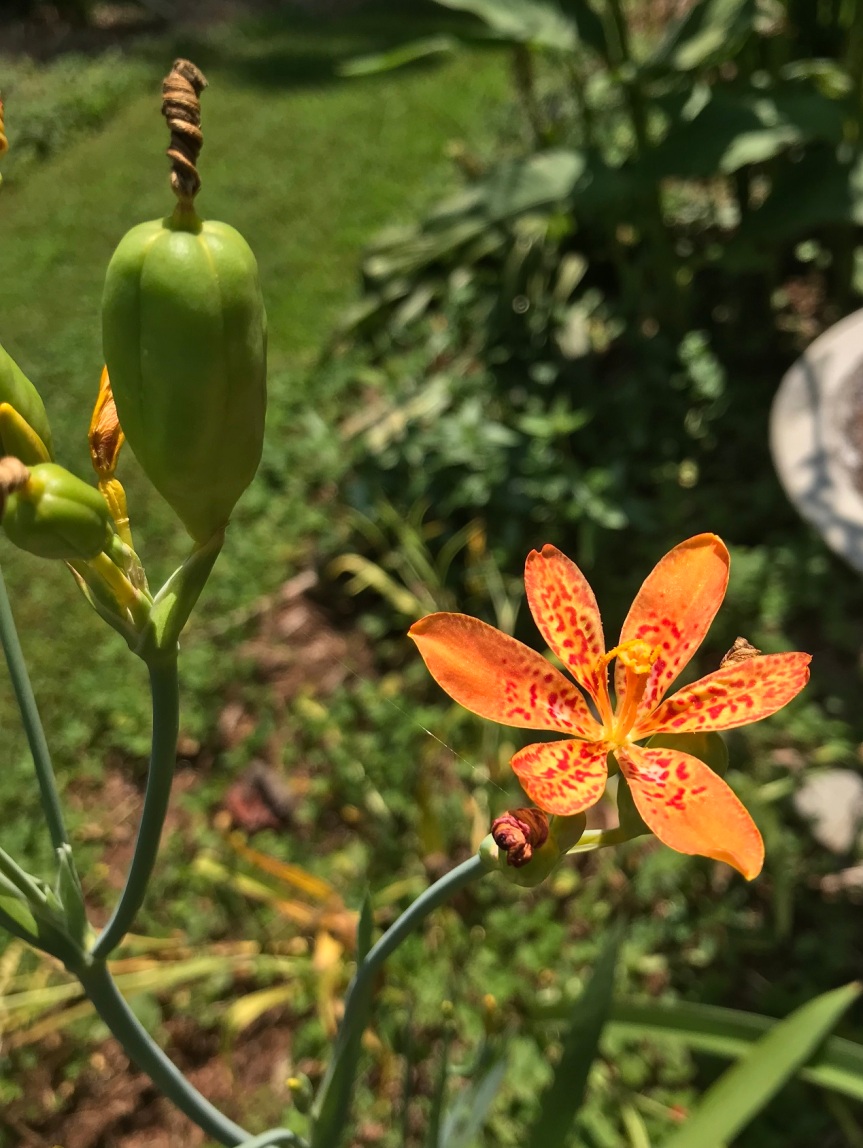For this week’s Six on Saturday, we are out of the garden and visiting the Eno River Confluence Natural Area. The Eno River is one of the gems of this part of North Carolina. A small river, little more than a large stream for much of its 40-mile course through Orange and Durham counties, it flows through the town of Hillsborough and city of Durham before merging with the Flat and Little Rivers to form the Neuse River. The Eno is home to several rare species that are endemic to the Neuse River basin, and it has been aggressively protected since the late 1960s by the Eno River Association. The Confluence Natural Area is a piece of protected land in Orange County that includes the spot where the East and West forks of the Eno flow together to form the Eno River proper. It was opened to the public relatively recently, and this was our first visit.
When my family and I visited, we were the only people on the 200-acre preserve, so I guess that covered social distancing requirements.
1. The Confluence
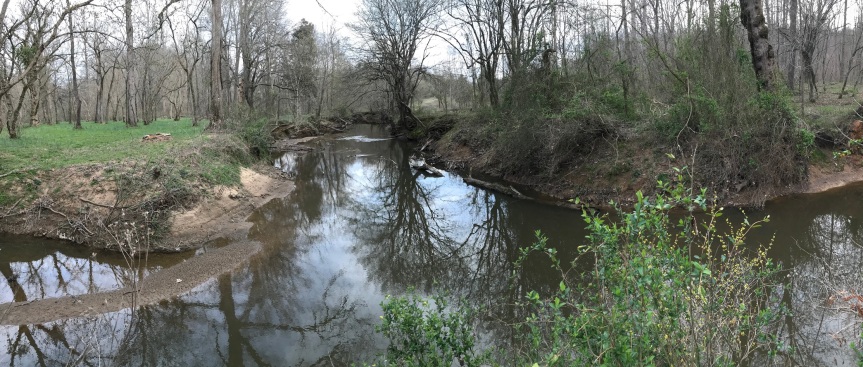
This is the point at which east fork (left) and west fork (right) merge to form the Eno (center).
2. Plethodon cylindraceus (white-spotted slimy salamander)

The kids couldn’t resist lifting a cover board that had probably been laid down for some herpetology classes. They found a handsome pair of slimy salamanders. To avoid crushing the salamanders, we gently moved them, laid the board back down, and then allowed the salamanders to climb underneath again.
3. Claytonia virginica (Virginia springbeauty)
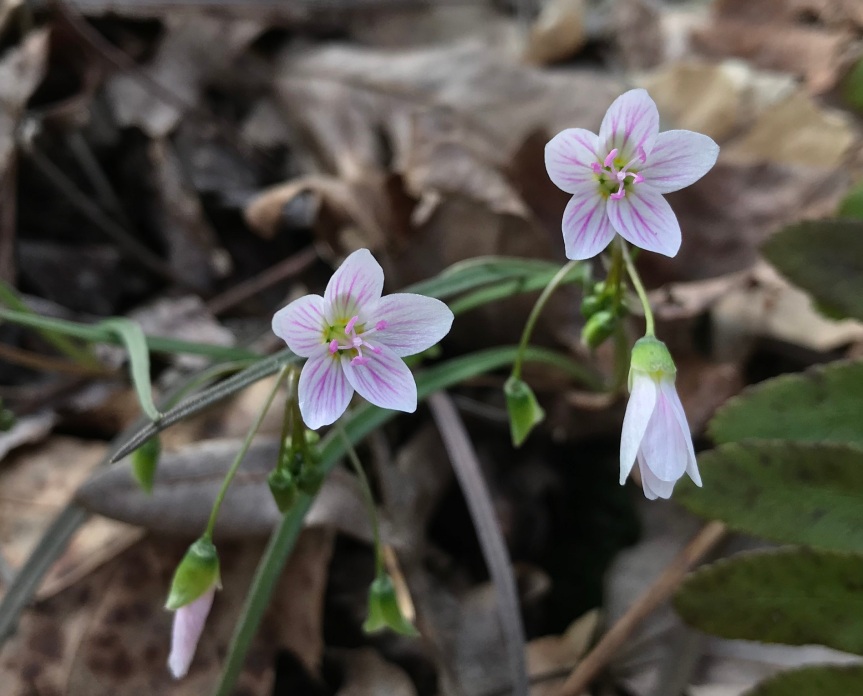
A variety of spring ephemeral wildflowers were in bloom on the wooded slopes and rich bottomland along the riverbanks. In North Carolina, C. virginica is a true piedmont native. It is absent from most of the coastal plain and from the mountains, where it is replaced by Claytonia caroliniana.
4. Cardamine concatenata (cutleaf toothwort; crow’s toes)

I just love the name “crow’s toes.”
5. Stellaria pubera (star chickweed)

In addition to these three wildflowers, we also saw Hepatica americana (round-lobed Hepatica), Anemonella thalictroides (rue anemone), Sanguinaria canadensis (bloodroot), and Lindera benzoin (spicebush) in bloom. Mayapple (Podophyllum peltatum) leaves were up, but the buds aren’t yet open.
6. Tree “footprint”

The heavy piedmont clay holds together so well, that the imprint of a large tree, including tunnels left by its roots, is still clearly visible after all the wood has rotted away. The “footprint” is slowly being covered by invasive Japanese honeysuckle (Lonicera japonica).
The propagator is the host of Six on Saturday. Head over there to see his Six and find links to the blogs of other participants.



